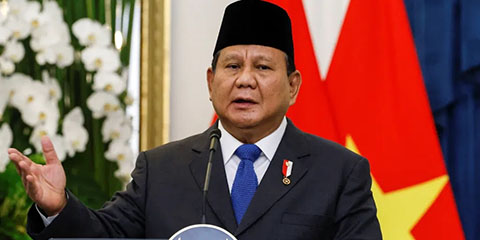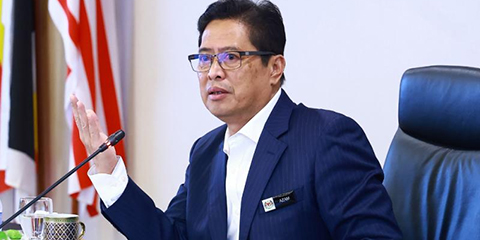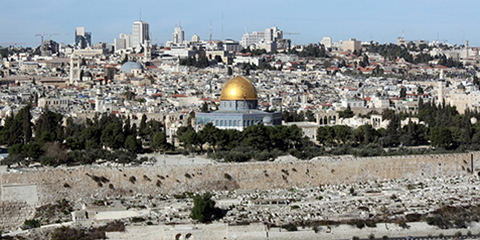JournalismPakistan.com | Published April 01, 2025 at 07:47 pm | IFJ Media Release
Join our WhatsApp channel
SYDNEY—Photojournalist Suresh Rajak was burned to death on March 28 while reporting from a building in Tinkune, Kathmandu, that was set alight by protestors during a violent demonstration. The International Federation of Journalists (IFJ) joins its affiliates, the Federation of Nepali Journalists (FNJ) and Nepal Press Union (NPU), in strongly condemning Rajak’s death and calling for an immediate investigation to ensure the perpetrators are brought to justice.
Rajak, the head of the camera and video division of Avenues Television, became trapped on an upper floor of the building when protesters rallying for the restoration of the monarchy in Nepal and support of former king Gyanendra Shah set the structure alight. The building was targeted after police allegedly launched tear gas at the crowd from the top floor.
Rajak was streaming live and was accompanied by colleagues Paras Shrestha and Anil Rayamajhi, who were tasked with covering the demonstration. According to Rayamajhi, Rajak had entered the building along with other journalists after protestors opened the building’s shutter. The building was set alight from the first floor, and Rajak remained in contact with the studio; however stopped responding as the other journalists were forced to move away from the structure.
According to República, Rajak’s colleagues reportedly pleaded with police to search for Rajak inside the burning building. Police allegedly showed little concern and maintained that no one was inside the building. Rajak’s colleagues were also told it was not possible to call a fire truck at that time, and a rescue vehicle did not arrive until the number of protestors had diminished.
A body burned beyond recognition suspected to be the journalist was recovered by police on the fourth floor of the building, hours after Rajak was reported missing by Avenues Television, who announced his death on air.
Thousands of pro-royalist protestors had gathered in Kathmandu on March 28, demanding a return to the Hindu monarchy, which was abolished in Nepal in 2008. Shah, the country’s last reigning monarch, was fined by Kathmandu’s civic body on March 29 following the destructive demonstrations in which another person was killed and at least 110 injured.
The IFJ’s affiliates in Nepal, the NPU and FNJ, condemned Rajak’s death in the highest terms, with the FNJ holding nationwide demonstrations on March 29 and launching a fact-finding committee to investigate the incident.
The FNJ said: “The FNJ is shocked by the news of Rajak's death in such a violent act by pro-royalist protesters. The FNJ demands legal action against the perpetrators, calling on the authorities to conduct a thorough investigation into this inhumane incident. The Union extends its heartfelt condolences and expresses its deepest sympathies to Rajak’s family.”
The NPU said: “The incidents of violent protests, the attack on The Annapurna Post, Kantipur Television, and other media, and threats against journalists are highly condemnable. The Nepal Press Union strongly opposes such actions against press freedom and any violent movements. We demand a thorough investigation of the incident, punishment for the perpetrators, and proper compensation for the victim's family and affected media personnel.”
IFJ General Secretary Anthony Bellanger said, “The IFJ strongly condemns the tragic death of photojournalist Suresh Rajak while carrying out his duties. The recent trend in attacks, intimidation and threats to media workers in Nepal must cease, and the IFJ calls on the government to conduct a thorough investigation and take swift action to hold the perpetrators to account. The safety and security of journalists must not be compromised, and further measures to protect the welfare of working journalists must be enacted by the state, police, and local media.”
سڈنی: فوٹو جرنلسٹ سریش راجک 28 مارچ کو کھٹمنڈو کے ٹنکونے علاقے میں ایک عمارت میں رپورٹنگ کے دوران جل کر جاں بحق ہو گئے، جب مظاہرین نے پرتشدد احتجاج کے دوران اس عمارت کو نذر آتش کر دیا۔ انٹرنیشنل فیڈریشن آف جرنلسٹس (آئی ایف جے) نے اپنے اتحادی اداروں فیڈریشن آف نیپالی جرنلسٹس (ایف این جے) اور نیپال پریس یونین (این پی یو) کے ساتھ مل کر راجک کے قتل کی شدید مذمت کرتے ہوئے فوری تحقیقات اور مجرموں کو انصاف کے کٹہرے میں لانے کا مطالبہ کیا ہے۔
راجک، جو ایونیو ٹیلی ویژن کے کیمرہ اور ویڈیو ڈویژن کے سربراہ تھے، اس وقت اوپری منزل پر پھنس گئے جب نیپال میں بادشاہت کی بحالی اور سابق بادشاہ گیانندرا شاہ کی حمایت میں احتجاج کرنے والے مظاہرین نے عمارت کو آگ لگا دی۔ مظاہرین نے اس عمارت کو اس وقت نشانہ بنایا جب پولیس نے مبینہ طور پر اوپری منزل سے ہجوم پر آنسو گیس پھینکی۔
راجک لائیو اسٹریم کر رہے تھے اور ان کے ساتھ پاراس شریستا اور انیل رایاما جی بھی تھے، جو اس احتجاج کی کوریج پر مامور تھے۔ رایاما جی کے مطابق، راجک دیگر صحافیوں کے ساتھ اس عمارت میں داخل ہوئے جب مظاہرین نے اس کا شٹر کھول دیا۔ عمارت کے پہلے فلور پر آگ لگائی گئی اور راجک اسٹوڈیو سے رابطے میں تھے، تاہم جب دیگر صحافیوں کو عمارت سے ہٹنا پڑا تو ان کی جانب سے کوئی جواب نہ آیا۔
ریپبلکا کے مطابق، راجک کے ساتھیوں نے پولیس سے درخواست کی کہ وہ جلی ہوئی عمارت میں انہیں تلاش کریں، لیکن پولیس نے مبینہ طور پر کوئی دلچسپی نہ دکھائی اور دعویٰ کیا کہ عمارت میں کوئی موجود نہیں۔ صحافیوں کو یہ بھی بتایا گیا کہ فائر ٹرک بلانا ممکن نہیں اور ریسکیو ٹیم بھی تب تک نہیں پہنچی جب تک مظاہرین کی تعداد کم نہ ہو گئی۔
پولیس نے کئی گھنٹوں بعد چوتھی منزل سے ایک جلی ہوئی لاش برآمد کی، جس کے بارے میں شبہ ظاہر کیا گیا کہ وہ راجک کی ہے۔ ایونیو ٹیلی ویژن نے بعد ازاں ان کی موت کی تصدیق کر دی۔
28 مارچ کو ہزاروں شاہ نواز مظاہرین نے کھٹمنڈو میں بادشاہت کی بحالی کا مطالبہ کیا۔ شاہ، جو نیپال کے آخری حکمران بادشاہ تھے، کو 29 مارچ کو کھٹمنڈو کی شہری انتظامیہ کی جانب سے اس پرتشدد احتجاج کے بعد جرمانہ کیا گیا، جس میں ایک اور شخص ہلاک اور کم از کم 110 افراد زخمی ہوئے۔
نیپال میں آئی ایف جے کے اتحادی این پی یو اور ایف این جے نے راجک کے قتل کی سخت الفاظ میں مذمت کی، ایف این جے نے 29 مارچ کو ملک گیر احتجاجی مظاہرے کیے اور اس واقعے کی تحقیقات کے لیے ایک فیکٹ فائنڈنگ کمیٹی تشکیل دی۔
ایف این جے نے کہا
“ایف این جے شاہ نواز مظاہرین کے اس پرتشدد عمل کے ذریعے راجک کی المناک موت پر گہرے صدمے میں ہے۔ ہم حکومت سے مطالبہ کرتے ہیں کہ وہ اس غیر انسانی واقعے کی مکمل تحقیقات کرے اور مجرموں کے خلاف قانونی کارروائی کرے۔ ہم راجک کے اہل خانہ کے ساتھ دلی ہمدردی کا اظہار کرتے ہیں۔”
این پی یو نے کہا
“پرتشدد احتجاج، دی اناپورنا پوسٹ اور کانتی پور ٹیلی ویژن پر حملے اور صحافیوں کو دھمکیاں دینا قابل مذمت ہیں۔ نیپال پریس یونین آزادی صحافت پر حملوں اور پرتشدد تحریکوں کی سخت مخالفت کرتا ہے۔ ہم مطالبہ کرتے ہیں کہ واقعے کی مکمل تحقیقات کی جائیں، مجرموں کو سزا دی جائے اور متاثرہ صحافیوں اور میڈیا اداروں کو مناسب معاوضہ دیا جائے۔”
آئی ایف جے کے جنرل سیکرٹری انتھونی بیلینجر نے کہا
“آئی ایف جے فوٹو جرنلسٹ سریش راجک کی المناک موت کی سخت مذمت کرتا ہے۔ نیپال میں حالیہ دنوں میں صحافیوں پر حملوں، دھمکیوں اور ہراسانی کے بڑھتے ہوئے رجحان کو روکا جانا چاہیے۔ ہم حکومت سے مطالبہ کرتے ہیں کہ وہ اس واقعے کی فوری اور مکمل تحقیقات کرے اور مجرموں کو قانون کے کٹہرے میں لائے۔ صحافیوں کی سلامتی کو کسی صورت خطرے میں نہیں ڈالنا چاہیے اور ریاست، پولیس اور مقامی میڈیا کو ان کی فلاح و بہبود کے لیے مزید حفاظتی اقدامات کرنے چاہئیں۔”

April 01, 2025: Assam Police arrested digital journalist Dilwar Hussain Mozumder for covering a protest against alleged corruption at Assam Co-Operative Bank. Media organizations have condemned the arrest, calling it an attack on press freedom.

March 27, 2025: Several journalists were attacked and forced to delete footage while covering anti-military protests in Indonesia. CPJ urges authorities to hold the perpetrators accountable.

March 23, 2025: The severed pig’s head sent to Indonesia’s leading news outlet, Tempo, signals escalating media intimidation amid President Prabowo Subianto’s attacks on foreign-funded media.

March 14, 2025: The Committee to Protect Journalists (CPJ) urges Maharashtra authorities to ensure their AI-driven media monitoring plan does not undermine press freedom. The initiative, which classifies news as positive or negative, raises concerns over government overreach and self-censorship.

March 11, 2025: Indian journalist and RTI activist Raghvendra Bajpai was shot dead in Uttar Pradesh on March 8 in a targeted attack. Media organizations, including IFJ, NUJ-I, and IJU, demand justice and an urgent investigation into his murder.

March 06, 2025: The arrest of Malaysiakini journalist B. Nantha Kumar by the Malaysian Anti-Corruption Commission has raised concerns over press freedom. The IFJ and NUJM call for a transparent investigation amid allegations of bribery and ongoing state harassment of independent media.

February 28, 2025: The Dewan Rakyat passed the Malaysian Media Council Bill on February 26, marking a historic step toward independent media regulation. Supported by journalists, unions, and media bodies, the council aims to set ethical standards, improve working conditions, and reform restrictive laws. The NUJM and IFJ celebrate this milestone while urging independence and adequate resourcing for the council.

February 24, 2025: Nepal's proposed Social Media Act Bill faces backlash for threatening freedom of expression and press freedom. Journalist unions and civil society urge the government to withdraw the bill, citing vague provisions and the potential for abuse.

April 02, 2025 The Pakistan Federal Union of Journalists (PFUJ) has strongly condemned the visit of a group of Pakistani journalists to Israel, calling it a violation of journalistic ethics and a betrayal of press freedom and human rights. PFUJ demands a transparent investigation into the matter.

March 30, 2025 Dawn criticizes Pakistan’s plan to use TV dramas against extremism, highlighting financial and digital challenges. Can media alone solve deep-rooted issues?

March 29, 2025 A federal judge has blocked the Trump administration’s attempt to dismantle Voice of America (VOA), ruling that the move likely violated legal procedures. The decision protects over 1,200 journalists and media staff.

March 28, 2025 Turkey deports BBC journalist Mark Lowen over 'public order' threat and fines opposition TV channels covering Istanbul Mayor's arrest. Critics condemn crackdown on press freedom amid rising political tensions.

March 28, 2025 An editorial in Dawn highlights how recent amendments to Pakistan's Prevention of Electronic Crimes Act (PECA) are being used to target journalists, activists, and citizens, raising serious concerns about freedom of expression.